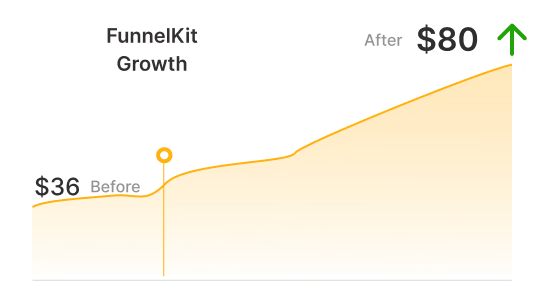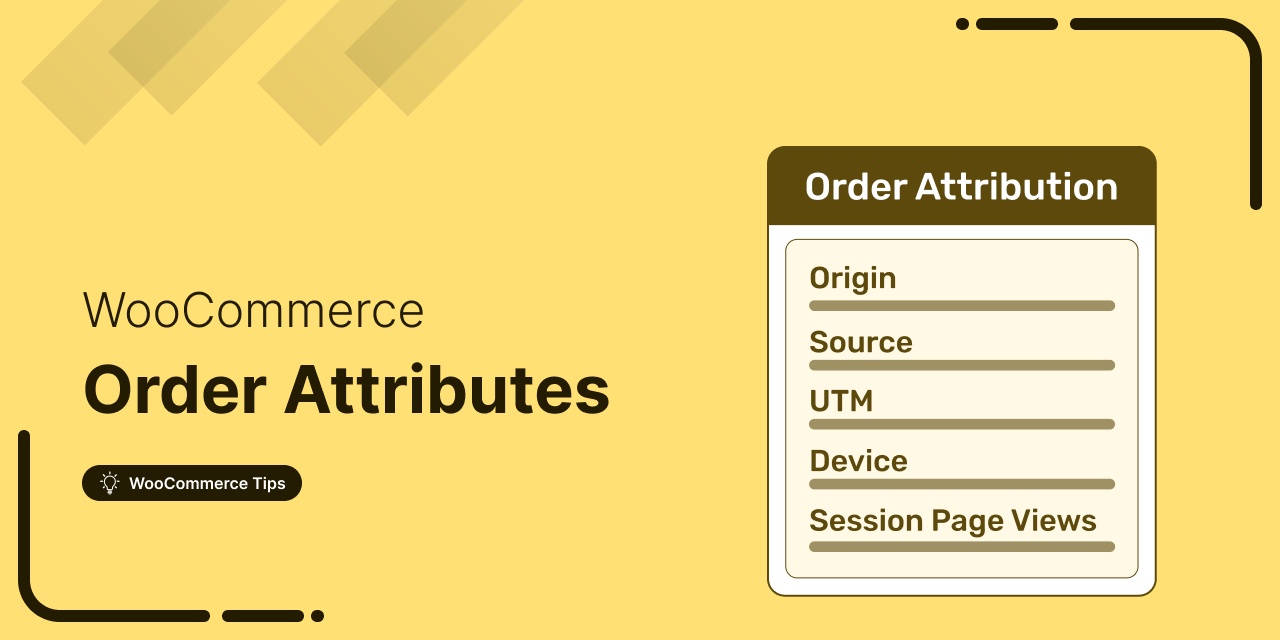
Discover how WooCommerce order attribution lets you pinpoint the sources of your sales to optimize marketing strategies and maximize conversions.
Do you track WooCommerce order attribution to understand your store’s sales and conversions?
Knowing where your sales come from helps optimize marketing and boost conversions. Proper tracking reveals which channels and campaigns generate revenue.
With 80% of marketers valuing attribution for better ROI and budget decisions [HubSpot], this blog covers everything you need to know about WooCommerce order attribution.
Let’s dive in!
Table of Contents
- 1 What is WooCommerce Order Attribution?
- 2 Where to Find the Default WooCommerce Order Attribution?
- 3 How to Use WooCommerce Attribution for Enhanced Conversion Tracking?
- 4 How WooCommerce Order Attribution Can Help Grow Your Business?
- 5 Best Practices of WooCommerce Order Attribution
- 6 Frequently Asked Questions (FAQs) About WooCommerce Order Attribution
- 7 Ready to Utilize WooCommerce Order Attribution to Grow Your Business?
What is WooCommerce Order Attribution?
WooCommerce order attribution refers to the process of identifying and analyzing the source of your orders, allowing you to understand how customers are finding and purchasing your products.
Note: This is a default feature of WooCommerce and is accessible for each order.
- Origin: It indicates where the customer came from before placing the order, such as a direct visit, a referral link, or an organic search.
- Campaign: It identifies the specific marketing campaign that led the customer to your site, helping you track the effectiveness of your promotional efforts.
- Source: It reveals the platform or website that referred the customer, such as Google, Facebook, or an email newsletter.
- Medium: Specifies the type of marketing channel used, like organic, paid, email, or social media.
- Device Type: Shows the type of device the customer used to make the purchase, like a desktop, tablet, or mobile device.
- Session Page Views: Tells you how many pages the customer viewed during their session before completing the purchase.
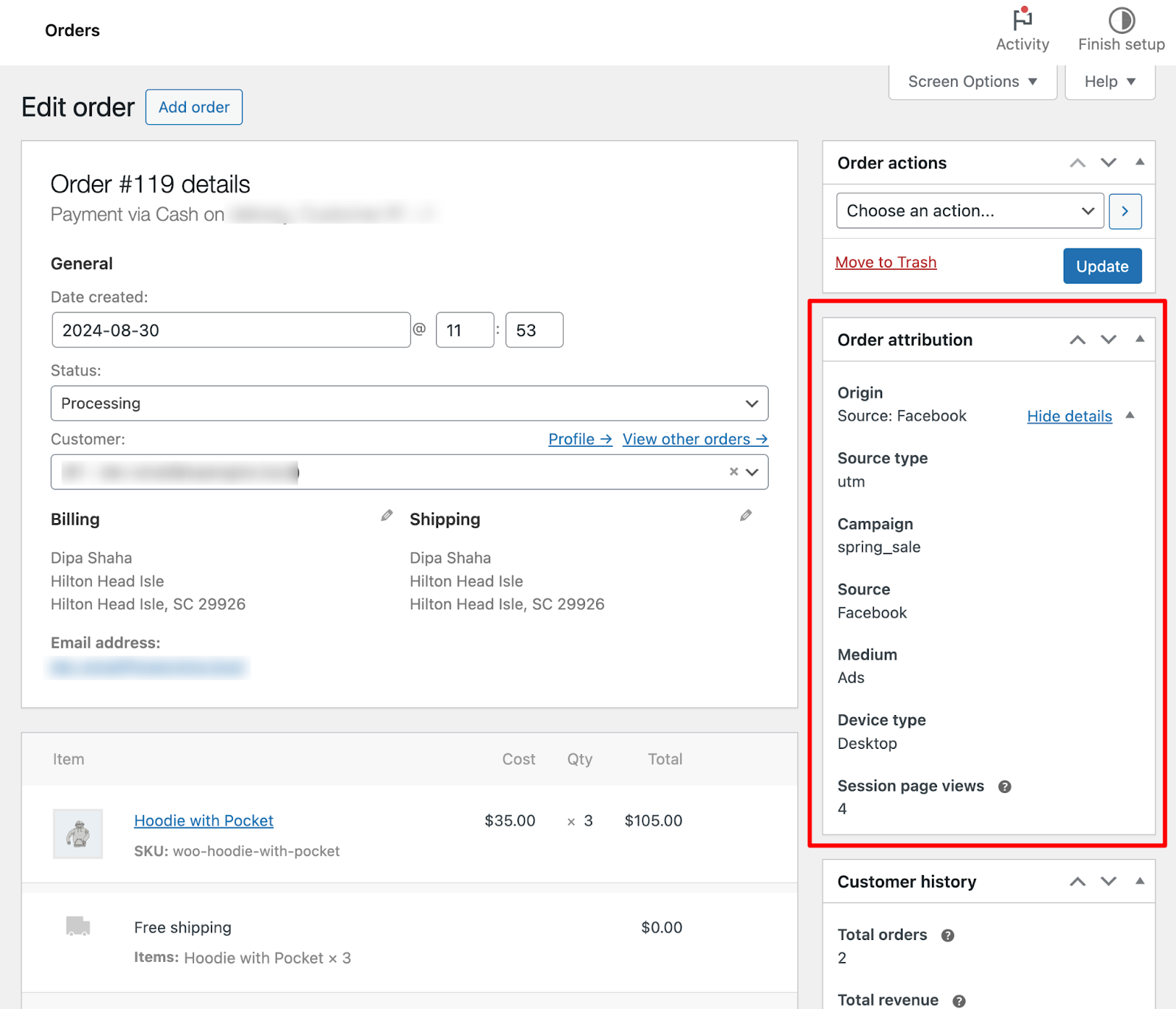
Where to Find the Default WooCommerce Order Attribution?
As mentioned earlier, WooCommerce provides order attribution for all the orders.
To find WooCommerce attribution for any order, go to WooCommerce ⇒ Orders and click on that order ID.
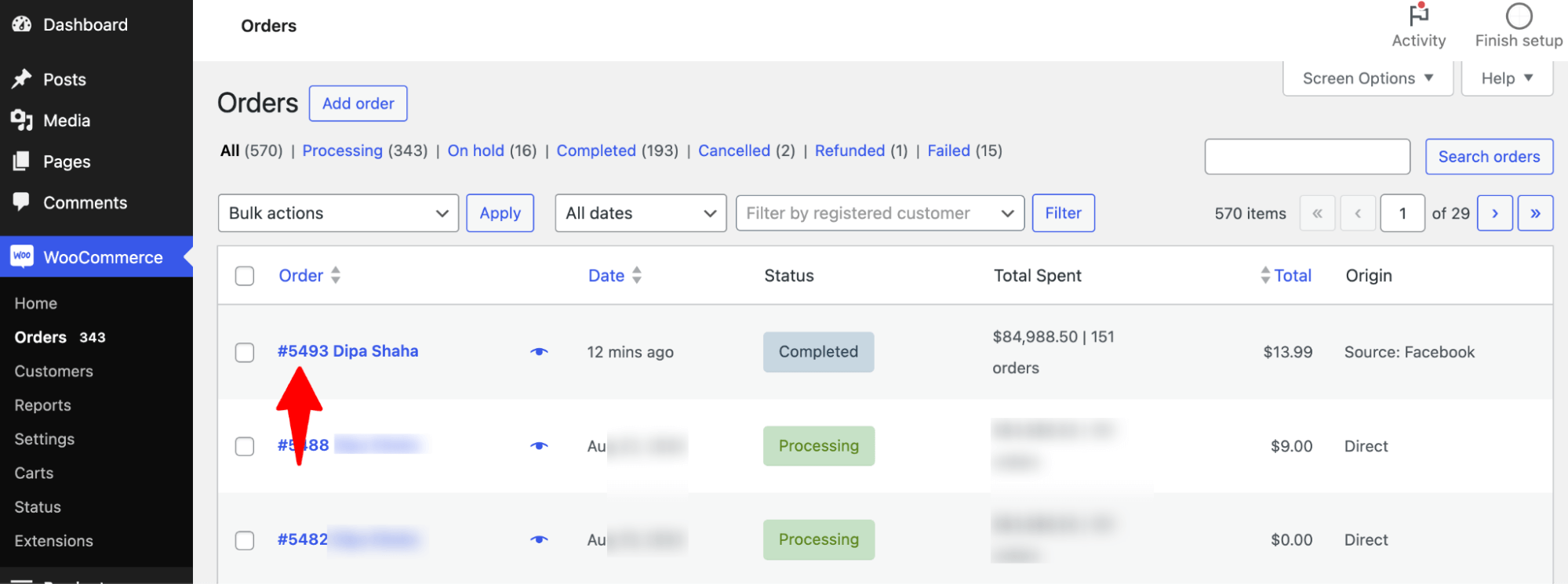
Now, on the right side, you can find a tab named “Order Attribution”.
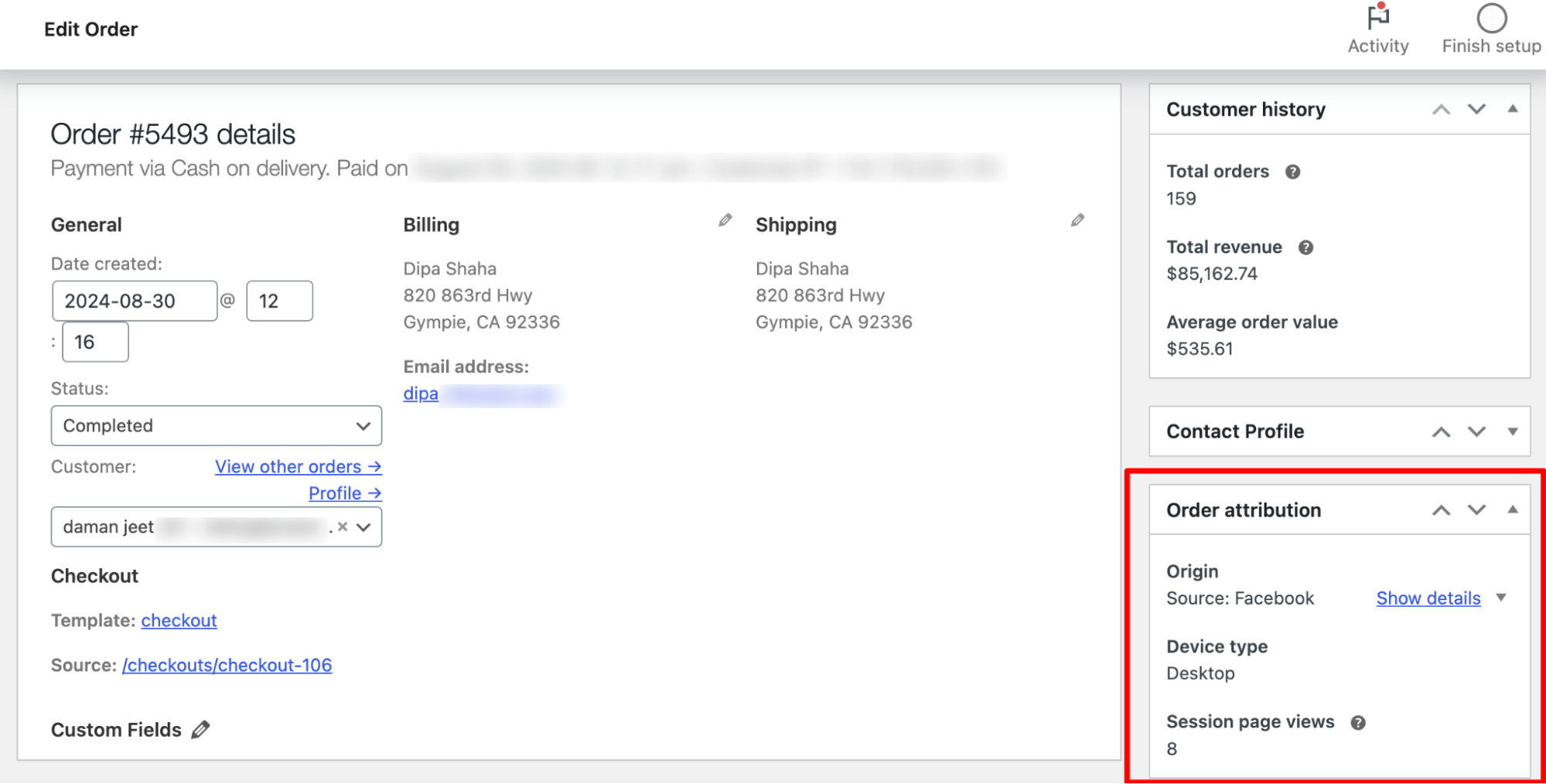
Initially, this tab displays the origin, device type, and session page views.
Click on “Show Details” to view additional details such as campaign, source, medium, etc.
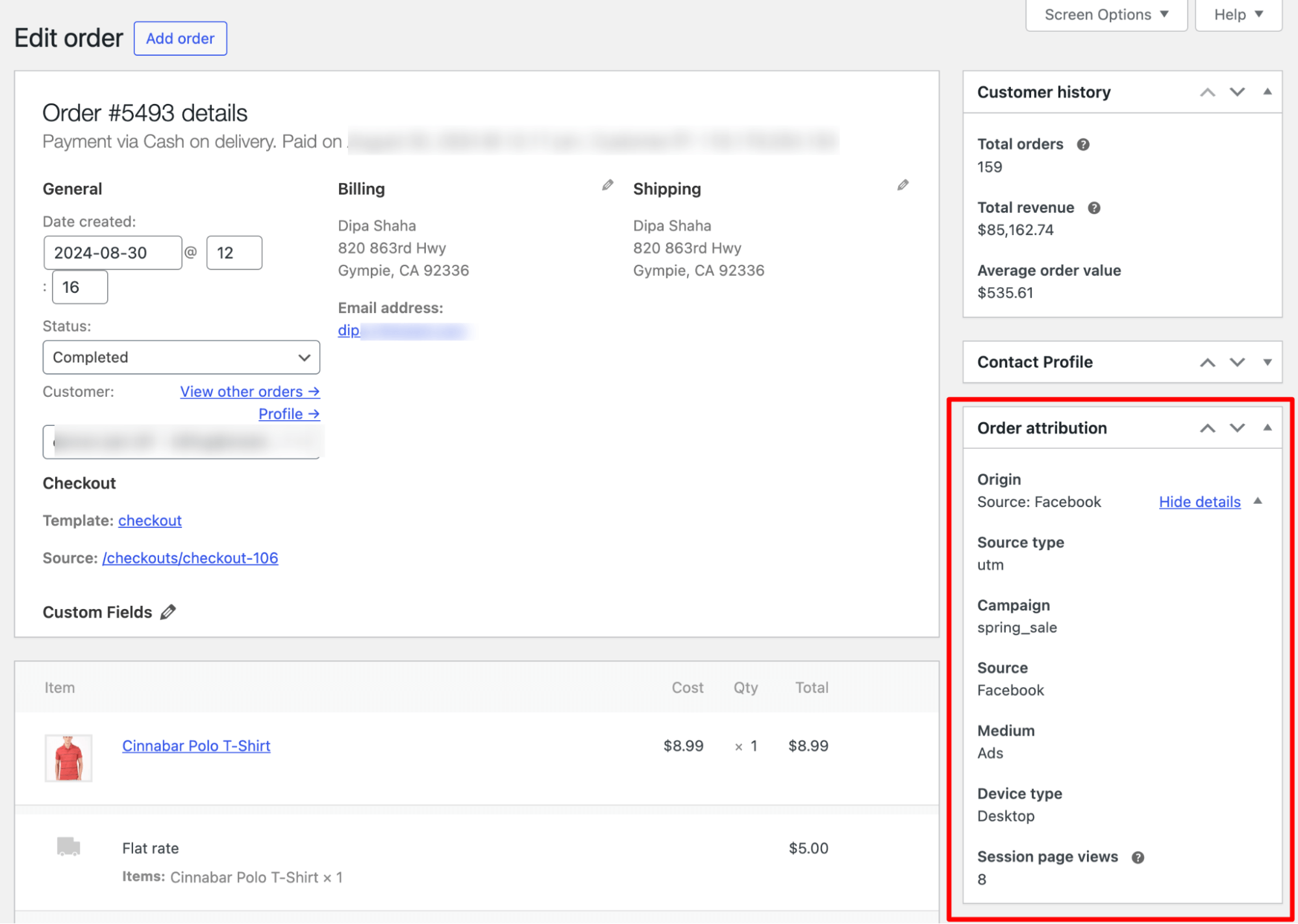
How to Use WooCommerce Attribution for Enhanced Conversion Tracking?
Along with order attribution, you can also use conversion tracking that gives you information like:
- First Interaction
- Conversion Time
- Browser
- Sales funnel from which the order was placed, etc.
To track conversion and collect WooCommerce attributes, follow these steps:
Step 1: Install and activate FunnelKit Funnel builder.
You can track conversions on your WooCommerce store with FunnelKit Funnel Builder. This is the best sales funnel builder for WordPress and WooCommerce.
With this plugin, you can replace the default checkout with a custom conversion-optimized checkout and also create multiple sales funnels to promote your products and boost conversion.
So, make sure to install and activate FunnelKit Funnel Builder.
To fully utilize them, you can read these resources.
Step 2: Enable first-party conversion tracking
Now navigate to FunnelKit ⇒ Settings and move to the First Party Tracking tab.
Ensure the “Enable First Party Conversion Tracking” option is checked, and click Save.
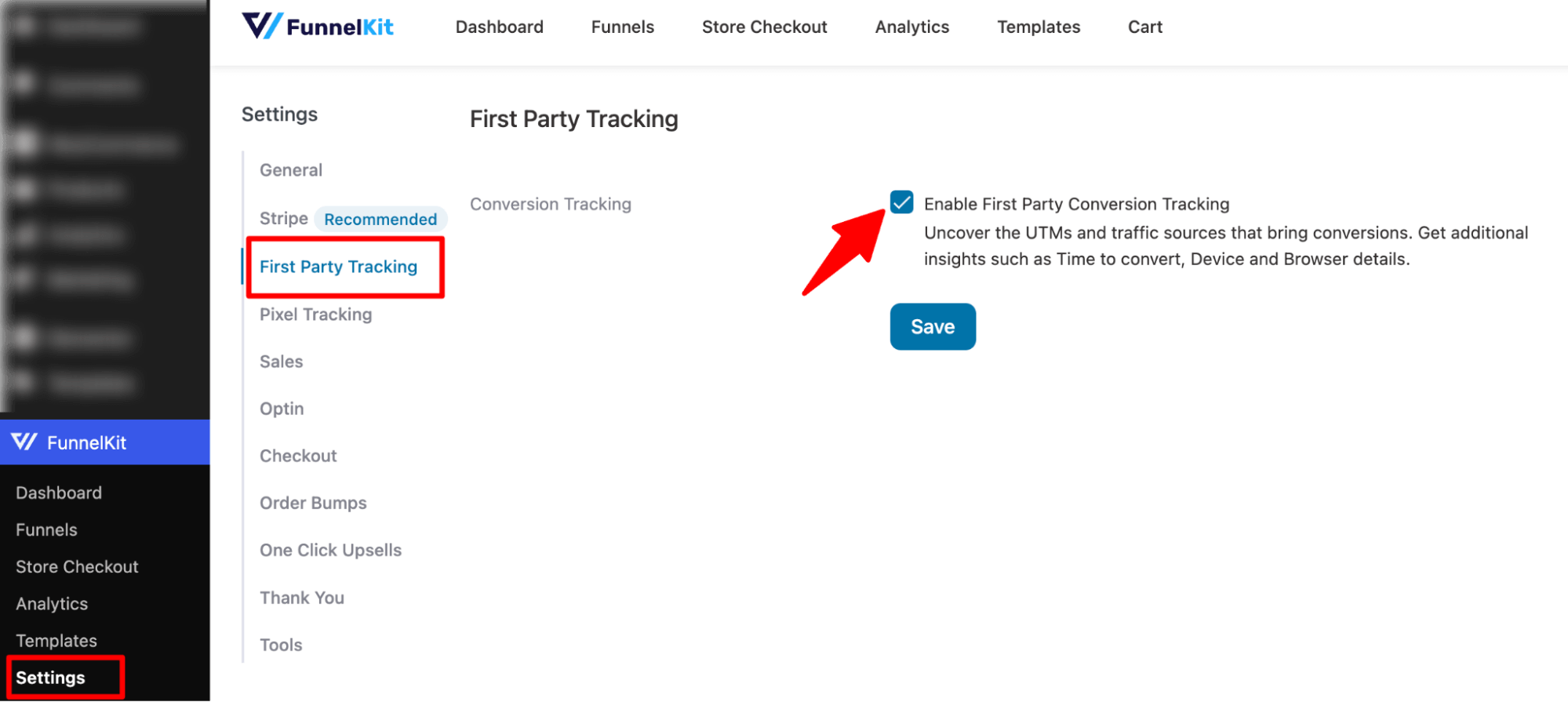
This will enable conversion tracking on your WooCommerce store.
Step 3: Test the conversion tracking
Now, place a test order with proper UTM values. You can place an order using the store checkout or any sales funnel.
Once the order is placed, go to the order and scroll down to the bottom on the right site to find the tab “Conversion Tracking”.
Here, you can find the funnel/store checkout link that the user used to place the order, the first interaction time, the conversion time, and other UTM values.
You can also go to the sales funnel with a single click if you want.
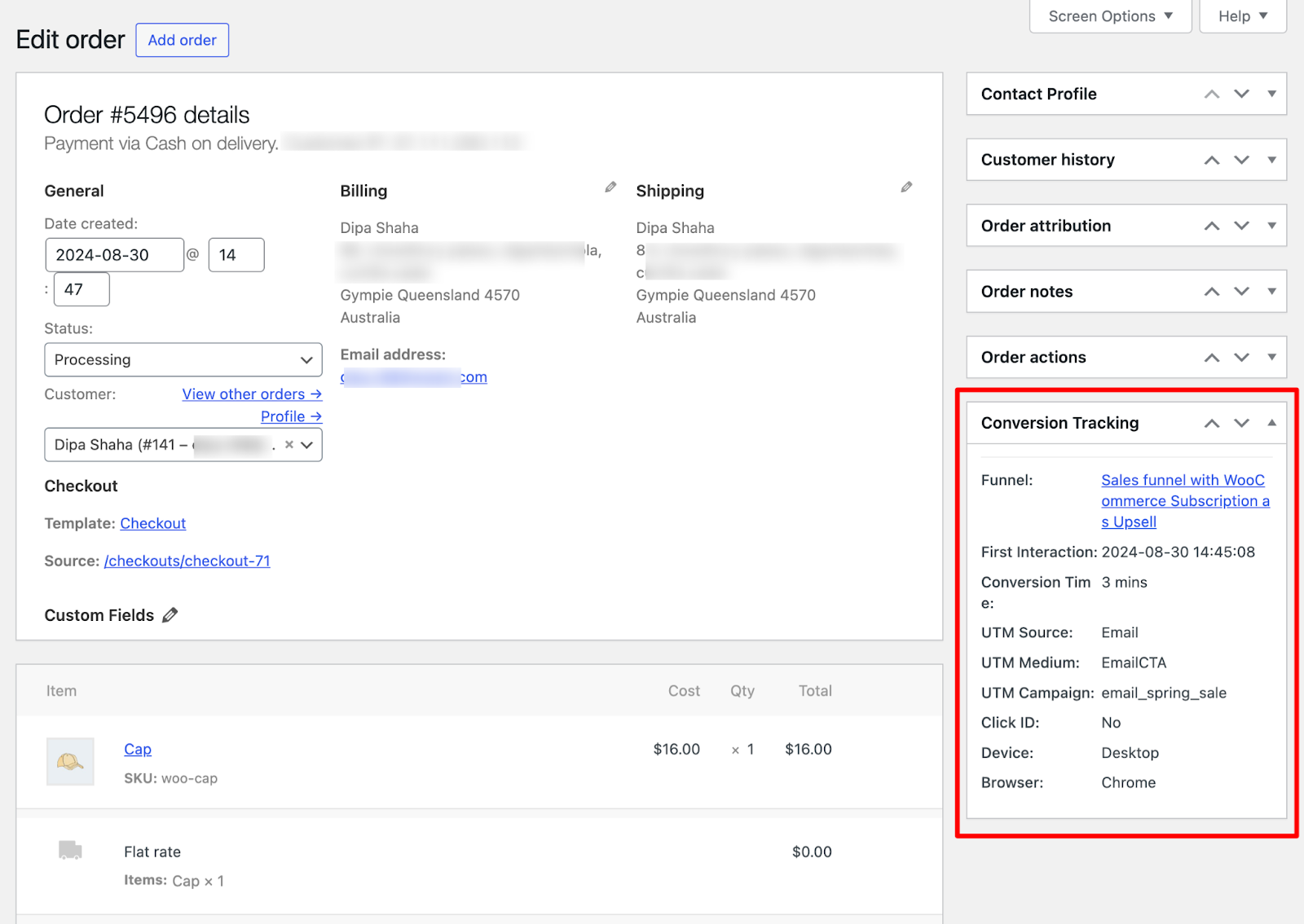
Here’s how you can easily track detailed conversion attributes for free.
How WooCommerce Order Attribution Can Help Grow Your Business?
WooCommerce order attribution helps you understand your audience and use that insight to grow your business. Here’s how:
- Identify high-performing marketing channels and campaigns
Attribution allows you to determine which marketing channels are driving the most revenue. By focusing on these high-performing channels, you can maximize your return on investment (ROI) and allocate resources more effectively.
- Optimize marketing campaigns
With clear data on which campaigns are most successful, you can refine your marketing strategies. This means investing more in what works and tweaking or dropping underperforming campaigns, leading to better overall results.
- Understand customer journeys
Attribution helps you map the entire customer journey, from initial interaction to final purchase. Plus, combined with conversion time data, you can gain deeper insights into customer behavior.
- Maximize return on investment (ROI)
By knowing exactly where your revenue is coming from, you can invest more strategically. This ensures that every marketing penny is spent wisely, increasing profitability and helping your business grow more efficiently.
Best Practices of WooCommerce Order Attribution
Follow these best practices to optimize your WooCommerce order attribution:
- Install a WooCommerce-specific attribution plugin
Don’t limit order attribution to the default WooCommerce settings. For more accurate tracking, it’s recommended to install an additional WooCommerce plugin.
Our experts highly recommend using FunnelKit Funnel Builder, as it helps you collect more comprehensive order attribution information. Plus, it’s completely free.
- Use UTM parameters for all marketing campaigns
Experts advise adding UTM parameters to all your marketing campaigns to gather additional data.
UTM parameters allow you to collect more detailed information, such as traffic source, medium, campaign, content, term, etc.
- Regularly audit WooCommerce order attribution
You must regularly audit the order attribution values to gain insights into how your marketing campaigns are performing.
Based on the audit data, you can make adjustments to your marketing campaigns to achieve better results.
Frequently Asked Questions (FAQs) About WooCommerce Order Attribution
- What are UTM parameters?
UTM parameters are tags added to URLs that help you to track traffic source, medium, campaign, etc., allowing you to better understand your order sources.
- How often should I audit WooCommerce order attribution data?
You should regularly audit WooCommerce order attribution data every few weeks to ensure your marketing efforts are aligned with your goals.
- Can I use the default WooCommerce settings for order attribution?
Yes. WooCommerce, by default, collects WooCommerce order attribution data. However, to collect additional data, you need to install another plugin.
- Is there a free plugin for WooCommerce order attribution?
Yes, FunnelKit Funnel Builder is a free plugin that helps you collect additional order attribution information.
- What kind of data can I collect with order attribution plugins?
With order attribution plugins, you can collect data such as the traffic source, marketing campaign, first interaction, conversion time, device, browser, etc.
Ready to Utilize WooCommerce Order Attribution to Grow Your Business?
As you have seen, WooCommerce attribution, both order attribution and conversion tracking, provides valuable insights into your customers and how they interact with your store and conversions.
Without these insights, it’s like navigating a ship without a compass; you might move forward, but you’ll struggle to find the right direction.
With clear data guiding your decisions, you can optimize every aspect of your marketing efforts.
The result?
More sales, happier customers, and sustained growth for your business.
So, start utilizing WooCommerce attribution data to sharpen your marketing strategy and steer your business toward success.

Editorial Team
December 24, 2025Your customer finds the perfect product. Adds it to the cart. Reaches checkout and sees a wall of form fields. Name. Email. Address. City. State. Zip. Card number. Expiry. CVV....

Editorial Team
December 22, 2025Shipping setup is where many WooCommerce store owners quietly lose money. Charge too much, and customers leave. Charge too little and profit margins suffer. Research from the Baymard Institute shows...

Editorial Team
December 15, 2025Your WooCommerce order confirmation email isn’t just a simple receipt; it’s a powerful marketing opportunity! With an average open rate of 65%, a click rate of 17%, and an order...

